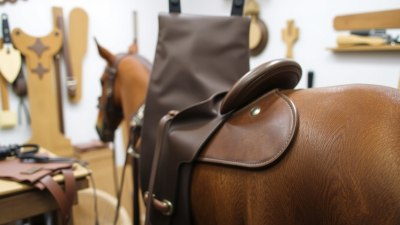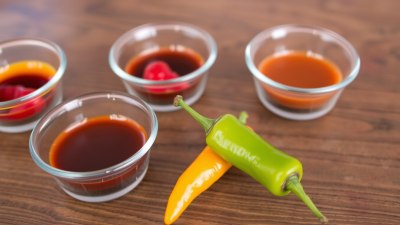Learning to Make Local Leather Goods and Saddles in Workshops
Discover the art of leather crafting. Join workshops to learn saddle making and local leather goods craftsmanship.

Image created with Flux Schnell
Leatherworking is a skill that combines artistry, craftsmanship, and tradition. The ancient practice of creating leather goods has evolved over centuries, but the fundamental techniques remain much the same. For individuals interested in getting hands-on experience, local leather goods and saddle making workshops provide a unique opportunity to immerse oneself in this craft. Not only do these workshops allow participants to learn about the materials and tools used, but they also foster a sense of community and appreciation for handmade products.
To begin, it's essential to understand the types of leather commonly used in crafting. Full-grain leather, which includes the entire thickness of the hide, is often preferred for high-quality goods due to its durability and visual appeal. Top-grain leather, which has been sanded and refinished, offers a more refined appearance but may be less durable than full-grain. For saddle making, quality leather is paramount since saddles must withstand both the weight of the rider and the rigors of horseback riding.
Tools of the Trade
Workshops typically provide participants with an introduction to essential tools used in leatherworking. These may include cutting mats, rotary cutters, knives, edge tools, hole punches, and stitching awls. Understanding how to properly use these tools can significantly enhance the craftsmanship of the items being made. Participants will often practice on scrap pieces of leather before moving on to their actual projects, allowing them to become familiar with the handling and properties of the material.
Choosing the Right Workshop
When looking for a leatherworking workshop, research local artisans and studios that offer classes. Many workshops cater to different skill levels, from beginners to experienced craftsmen. It’s advisable to choose one that specifically focuses on the type of leatherwork that interests you the most, whether it’s creating wallets, belts, handbags, or saddles. Instructors with extensive experience in saddle making can offer invaluable insights on techniques and adjustments that are critical for functionality.
Workshops may vary in duration; some can be a few hours long, while others may span several days, allowing participants to complete a project from start to finish. Choosing a longer workshop can also provide more in-depth teaching and skill development.
Understanding Leather Properties
Each type of leather has unique characteristics that influence how it can be worked. Understanding the grain pattern, thickness, and treatment of the leather is critical for selecting the right piece for your project. For saddle making, the leather used must possess a certain thickness and tensile strength to endure the demands of equestrian activities.
The Process of Making Leather Goods
The first step in leatherworking is pattern making. Participants learn how to draft, cut, and size their patterns accurately. This process involves measuring and marking the leather carefully to minimize waste. A precise cut is necessary to ensure that the final product looks polished and professional.
After cutting, the next stage involves preparing the edges. Leather pieces often have raw edges that can be rough or uneven. Proper edge finishing techniques include burnishing, sealing, or sanding the edges to create a smooth, aesthetically pleasing finish. In many workshops, participants learn how to apply edge dye or wax to enhance the durability and appearance of the edges.
Saddle Making Techniques
Saddle making is a specialized area of leatherworking that requires knowledge of specific techniques. In saddle-making workshops, participants typically learn about the anatomy of a saddle, the different components such as the tree, seat, skirts, and rigging, and how these parts work together to provide comfort and safety for both horse and rider.
Participants will likely have the opportunity to work with pre-shaped saddle trees and build upon them. The assembly process will involve stitching, riveting, and using appropriate adhesives to create a sturdy finished product. Skills like hand-stitching with waxed thread are essential, and learning how to create decorative stitches can add a personal touch to the saddle.
Finishing Touches
Once the main constructions of the leather goods or saddle are complete, finishing touches are critical. This may incorporate dyeing, painting, or adding personalized embossing or tooling to the leather. Many workshops emphasize the importance of finishing as it can elevate a simple piece into a work of art.
Choosing the right finish is essential; it should both protect the leather and enhance its appearance. Participants will often experiment with various types of finishes, learning how they can change the color and texture of the leather to suit their design intentions.
Taking Your Skills Home
One of the great outcomes of attending a leatherworking workshop is the ability to take home new skills. After learning the basics of leather goods and saddle making, participants can continue crafting on their own. Many find that a workshop ignites a passion for leatherworking, leading to more advanced projects created at home. Resources such as instructional books, online tutorials, and further workshops can provide ongoing education.
Building a Community
Joining a local leatherworking community through workshops allows individuals to connect with fellow leather enthusiasts. Sharing insights, asking for advice, and exchanging ideas can enhance the learning experience and help beginners feel more confident in their skills. Community events, craft fairs, and online forums can all foster engagement and learning.
Learning to make leather goods and saddles through workshops provides the opportunity to acquire a valuable skill set while engaging with a vibrant community. The satisfaction of creating something by hand from high-quality materials speaks to a growing desire for craftsmanship in today's world. Whether as a hobby or a potential business venture, leatherworking holds the promise of creativity and self-expression for those willing to invest the time and effort into mastering this noble art.











